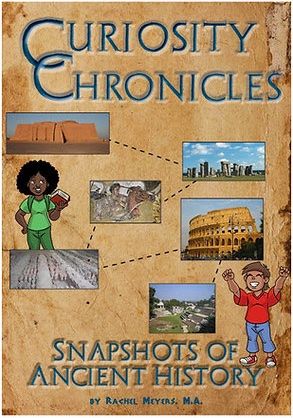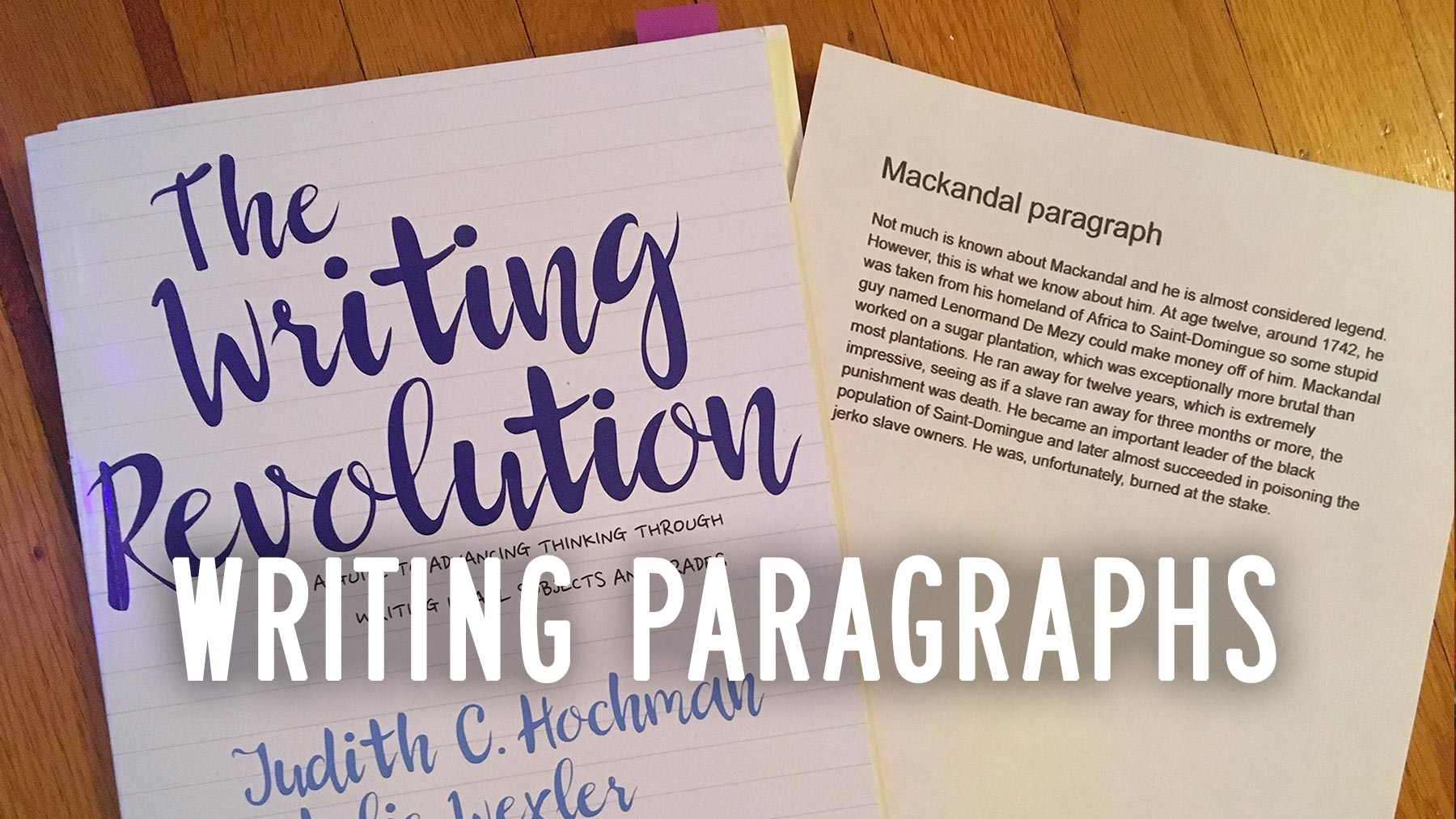Choosing a world history curriculum: Curiosity Chronicles
A look at the reasons we chose the Curiosity Chronicles curriculum, and how we're using it.

As I mentioned recently, we just started using a curriculum for world history for the first time, in 4th grade, after a few years of making our own random tour through history via books and videos. (More about my reasoning for that approach, and a list of the video resources we've used, in this post.)
Choosing a history curriculum
I've been shopping for a elementary history curriculum for years now, and I can't say I truly love any of them. They all suffer from the limitation of telling a story through one particular lens, even if that lens is trying to be expansive and inclusive.
(My dream elementary grades world history curriculum: one that is written with the input of a team of college history professors from around the world, reflecting what they wish the young people entering their lecture halls understood about the history of their corner of the planet, while discarding the rehashing of old stories that are just flat-out wrong. With lots of complexity and nuance! Because I think we sell kids short about what level of complexity they can handle, and their history education suffers from it. Imagining what it would take to organize and execute the creation of that curriculum makes my head swim, so I'm not surprised that such a curriculum doesn't exist, but a girl can dream.)
Of the available world history curricula, I narrowed it down to three:
- Story of the World
- History Quest
- Curiosity Chronicles
Each of these three have many fans in the secular homeschooling community. I downloaded samples from the Ancient History level of each. I saw reasons why Wanda might like or dislike each of them, and I didn't feel there was a clear stand-out winner.
Story of the World, by Susan Wise Bauer, has been around the longest. It felt like it might have the most rigor and depth, but was also the most Eurocentric. (The table of contents for SotW gives me the impression that it spends about equal time on William Shakespeare as it does on the entire continent of Africa.) The text seemed to be well-written, academic but engaging, but it did feel a bit dry. It has attractive but sparse pencil drawing illustrations.
History Quest, by Lisa Hawkins, is a bit better on shifting away from the Europe lens, but the writing style didn't feel like it was a great fit for my kid, and the grayscale drawings weren't likely to hold Wanda's attention. Overall, it felt less polished than Story of the World.
Curiosity Chronicles, by Rachel Meyers, uses many color photographs and some color illustrations. I felt that being able to see actual color photographs could make a big difference for Wanda. Of the three history curricula, it seems to do the best job of breaking out of the Eurocentric mold. But the writing style is unusual, which I feared could be a swing-and-a-miss for Wanda: it's in the style of a dialogue between two older kids who are exploring history together. Would that be engaging, or annoying?
I couldn't decide (and putting the options away and then taking them out again to try to pick one, over and over again, for years, wasn't getting me anywhere).
So I asked Wanda to choose with me. I showed her the samples, and she chose Curiosity Chronicles. Full color goes a long way in helping hold her attention. She was also attracted to the one that would tell the least Eurocentric story. And she liked the dialogue style!

Choosing a Curiosity Chronicles package
Curiosity Chronicles has several components, and you can purchase all of them as a package, or go a la carte:
- The main textbook, Curiosity Chronicles: Snapshots of Ancient History
- Audio recording of the textbook
- Instructor's guide, with activities and cues for extending learning
- Student workbook, for the activities from the instructor's guide
- Interactive notebook kit, for the child to create a notebook of their learning
- Timeline kit, with printables to create a timeline of the events from the textbook
The components we didn't purchase, and why:
Wanda and I looked at the instructor's guide, student workbook, and interactive notebook kit—all pieces meant to extend the learning of the main text—and decided those weren't a fit for us. While the Ancient History level is meant to be a starting point for any age including older kids, it is targeted at early elementary. Many folks start using this level for first grade. Even when Wanda was younger, little of the content in these components would have been a fit for her; it's just not her style, and would have felt like busy work.
These components include vocabulary lists, discussion questions, hands-on activities, workbook activities, and book lists for more reading. It's not expected that you do everything in the guide and workbook—they are a selection of ideas you can use, and you pick whatever is a fit for you. Some of the activities look like they veer into Grecian urn territory, but I do see how these components could be helpful in other families.
What we did purchase:
We bought the main Snapshots of Ancient History textbook, the audio recording of the textbook, and the timeline kit. The textbook is available as a hardcover, paperback, or PDF, and Wanda wanted the PDF. The timeline kit only costs a buck, so what the hey. Those three pieces only cost $39.

How we're using Curiosity Chronicles
Since we decided the official Curiosity Chronicles extension activities weren't a fit for us, I'm having to do a bit of my own lesson planning work to extend the lessons. It's not too bad, though, it only takes me about 10 minutes to create a lesson. Here's what our lessons look like:
Reading the textbook
We decided that Wanda would read the Snapshots of Ancient History textbook on her iPad while we played the audiobook recording.
(The audiobooks are being re-recorded by Curiosity Chronicles, because the Mona character sounds like she was doing her recording at the bottom of a well. Poor Mona! All of the other levels have been re-released, but the updated Ancient History recording hasn't been completed yet. The sound quality issue is annoying, but you get used to it.)
The chapters are short, about five pages long; the audiobook recordings average about six minutes. Despite my reservations about the dialogue format, I've been pleased with the quality of the learning the text packs into that short time.
Deeper discussion
One of the elements of the instructor's guide that could have been helpful for us are the question prompts for deeper discussion. However, Wanda and I naturally fall into talking about our lessons, making connections with other things we've learned. When we're using other curricula with these sorts of discussion prompts, I often find that Wanda will bring up a planned discussion topic on her own before I do, so we're probably doing okay without them.
Writing activities
Here's where I'm having to do a bit more heavy lifting: for each chapter, I'm creating a writing activity, in the style of The Writing Revolution. I've written quite a bit about how we're using The Writing Revolution, but this post in particular on writing paragraphs à la TWR demonstrates the strength of this approach:

Our experience with the Exploring the World through Story (EtWtS) curriculum, which comes with TWR-style writing activities, has helped a ton. It has helped me by modeling how to create effective writing activities, plus our regular use of EtWtS has given me a tighter understanding of Wanda's current capabilities. In addition, EtWtS has built up Wanda's writing stamina and confidence, making her more comfortable with writing activities in general.
The activities I've created for Curiosity Chronicles have included sentence completion, sentence expansion, note taking, and mostly paragraph writing. Each time I create an activity, I consider what the text of that chapter may lend itself well to, and what skills I've recently noticed Wanda could stand to work on.
In the past, I've shared many of the TWR-style writing activities I've created here on the blog for others to download and use. However, I don't currently have a plan to release these ones, because while my activities are quite different from the Curiosity Chronicles activity products as mine are targeting an older audience, it is based on their content and competes too closely with their product. If I get a free moment, I may reach out to the creator of Curiosity Chronicles, Rachel Meyers, to see if she would like to have them, or if she would give her blessing for their release for general use—and if her preference is that they remain only for my personal use, I am 100% in support of that. It is very, very important to me that her hard work on creating this curriculum is supported, not drained from.
Success when doing a heavily-scaffolded TWR-style activity is one thing—but in order to feel confident that the TWR approach is truly working, I need to see those writing skills transfer to non-TWR activities. Last week, in Chapter 13 of Curiosity Chronicles, we learned about the female Egyptian pharaoh Hatshepsut—a topic I felt Wanda would be particularly interested in. I thought that the subject might work well for experimenting with giving Wanda a rare unstructured writing assignment. I just told her to write about Hatshepsut, in an academic style, using what she'd read that day. I told her she could approach it however she wanted, and I didn't set an expectation for length.
She wrote an ESSAY! It was good! It was factual and a joy to read! Each paragraph stuck to its own topic! There were transition sentences! A closing statement! And we haven't even started learning about essays yet! I told her: did you know that you wrote an essay?? She said, "I did, and I didn't." She was so proud of her work, and I was too. This is an exciting and encouraging glimmer that we're on the right track in our writing work, and that this history learning is engaging, with a good retention possibilities.
Related topics
At the end of each chapter in the Curiosity Chronicles textbook, there is a gray box that says "Want to know more?" with a handful of related topics suggested for further research. Wanda selects one of these, and we hit YouTube. We've found some wonderful gems that way, including this video by Xiran Jay Zhao about the female general Fu Hao in the Shang Dynasty:
I listed some of our favorite YouTube channels for history on my post about videos for homeschooling history.
Timeline
As mentioned, I also purchased the Curiosity Chronicles timeline kit for Ancient History. Only a buck! I have another blog post brewing about history timeline work, so I won't get into the details of how we're using it, but it's a good value. We spend a few minutes at the end of our lesson time gluing in a few timeline markers related to that day's learning.
Memory work
In the Facebook group for Curiosity Chronicles users, a kind soul shared flash cards they created that cover all of the topics! They're available as PDFs in the Files section of the group. Those flash cards are more detailed than I wish to go, but they're a great resource.
In summary
So far, Wanda and I are both enjoying Curiosity Chronicles, and I'm glad we've made the leap to using a curriculum. We'll continue to also learn about history via other resources, but having this chronological tour through history is a nice underpinning. You can learn more about Curiosity Chronicles at their website.


